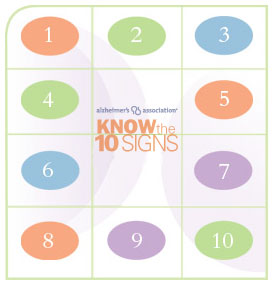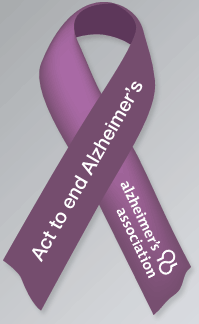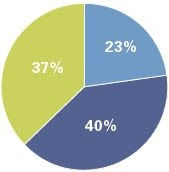It's hard to get focused on other concerns other than the flu but we must because there are other diseases that are more pressing and whose effects are more pronounced. You wouldn't think that to look at the stories we do and then we complain that the networks always want us to focus on the least important as a serious concern. We've been affected by family and friends who suffered from Alzheimer and lead to their deaths. The numbers are significant but don't seem to be pervasive.

"Meditation can increase blood flow in the brain and improve memory, according to researchers who tested a specific kind of meditation and found the improvement after just eight weeks. The 15 participants, ages 52 to 77, all had memory problems at the start, says Dharma Singh Khalsa, MD, one of the researchers and the medical director of the Alzheimer's Research and Prevention Foundation in Tucson, Ariz. For eight weeks, the participants engaged in a meditation at home known as Kirtan Kriya, which originated from the Kundalini yoga tradition. "It only takes 12 minutes [a day,] it's easy to learn, it doesn't cost anything, and it has no side effects," Khalsa tells WebMD. The technique, he says, "reverses memory loss in people with memory problems." - WebMD (Mar 2010)They're aren't any preventions for the disease that we can do from the seated position. Much like the primary causes of death that require exercise and diet this one we can put in the delay to do column. You know we'll get around to it before its too late and then when the doctors tell us its do or die then we'll start to cry like a little baby and bemoan the fact that we didn't and we knew we should have. Probably then we'll decide that it's too late to exercise and diet now because we're going to die - just like our parents. Sometime bad habits aren't genetic just poorly learned.
There is hope since this story began the New York Times reported on a story that we could not verify but report because, well it's the New York Times and the story found the following:
"Two research teams have independently decoded the entire genome of patients to find the exact genetic cause of their diseases. The approach may offer a new start in the so far disappointing effort to identify the genetic roots of major killers like heart disease, diabetes and Alzheimer’s." - The New York Times (NYT)"We found the research alright. What we didn't find was the findings reached by the New York Times. From the first research team from Baylor College of Medicine (BCM) from Houston TX was:
"We hope we can use the information about you and your genome in your care," said Dr. James Lupski , who is both an M.D. and a Ph.D. "If you have hypertension, can we use your genome to figure out a better treatment for you? It will take a lot of time. We don't know what 90 percent of the genes in the genome do." - ( BCM)How this would help individuals currently suffering from Alzheimer's disease we don't know from either the report or the available research. This is another one of those cases where if you're not a part of team or subscribed to the journal where the information is published, as we aren't, you only get just the little parcel of information to whet your appetite.
What's particularly missing from the story in the Times is how much like bio-identical treatment this type of research has revealed. This genome mapping within the family is currently extremely expensive though with more use will lower costs. Though the mapping is important its not a solution its a map to where a solution might be located. It's a diagnostic device. Traditional methods for understanding genes have been according to the Times:
"...turning out to be incorrect. Scientists thought the mutations that caused common diseases would themselves be common. So they first identified the common mutations in the human population in a $100 million project called the HapMap...."
 |
"These projects, called genome-wide association studies, each cost around $10 million or more.The results of this costly international exercise have been disappointing. About 2,000 sites on the human genome have been statistically linked with various diseases, but in many cases the sites are not inside working genes, suggesting there may be some conceptual flaw in the statistics. And in most diseases the culprit DNA was linked to only a small portion of all the cases of the disease. It seemed that natural selection has weeded out any disease-causing mutation before it becomes common.The finding implies that common diseases, surprisingly, are caused by rare, not common, mutations. In the last few months, researchers have begun to conclude that a new approach is needed, one based on decoding the entire genome of patients." - The New York Times (NYT)Check out the entire article for yourself. The cure for what ails you isn't always solved by group cures which is probably not what the pharmaceutical companies find very comforting. The results for us is a future lack without drug interactions. We're not ignoring the headlines that been all over the news and in the paper. It's just that there's nothing to do with the news. What do you do with this nugget of information?
"African-Americans and Hispanics have a higher rate of Alzheimer's than whites to have Alzheimer's and dementia, they are less likely than whites to have a diagnosis." - Alzheimer's Association: Fact and Figures (ALZ).
|
We would have brought this story to you sooner but we forgot. It's a good thing that we remembered to 'er 'um. What were we saying?
The pie charts at the upper right hand of the page is from the Alzheimer's Associations report for 2010 of the levels of impairment for the Nursing Home Residents for the local jurisdiction. We admit that we did sort of "chop shop" the other chart from the report to make the information clearer for easier comparison. The PDFs of the specific states are available directly from the links below. The total number of Nursing Home Residents for 2006 was reported as 65,573 the page can be directly accessed through this link: MD (PDF). The District of Columbia reported their Total Nursing Home Residents to be 5,176 and is available from the Alzheimer's Association website as: DC (PDF). North Carolina reported the highest Total Number of Nursing Home Residents at 89,223 and is available as: NC (PDF). Virginia reported the second highest Total Number of Nursing Home Residents at 72,214 for 2006 and is available directly at: VA (PDF).
The implication is that people at in a nursing home because they are suffering from very mild to severe levels of impairment. Which according to the charts, equal or exceed sixty (60) percent of the residents. The report examines the financial costs of these facilities to the individual and society. You can read the report and decide for yourself. Our concerns is for avoiding and surviving all manner of diseases and delaying death at all costs just as long as we can do it while we're reclining.








Jon and Deb, now I see how much I've been missing. I've got to start checking in weekly if not daily. Again, you have covered a subject near and dear to me and provided useful, valuable information. Thanks so much! Bless you, bless you, bless you!!! Wendy of the G-burg
ReplyDelete